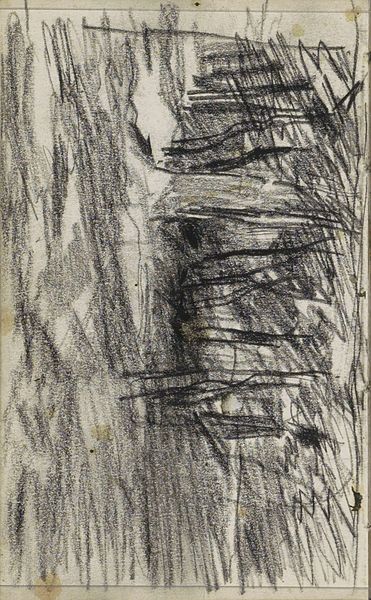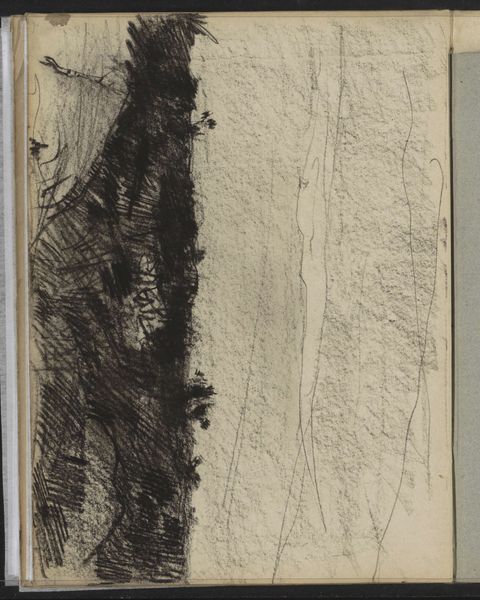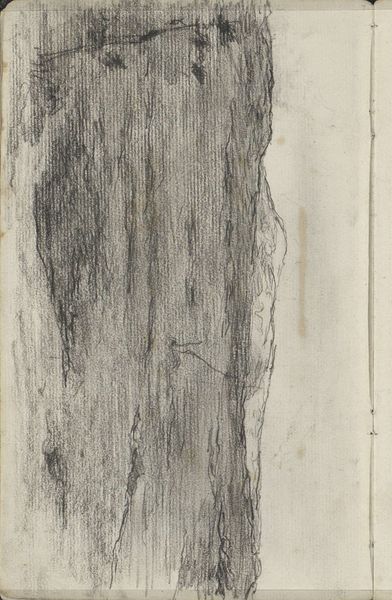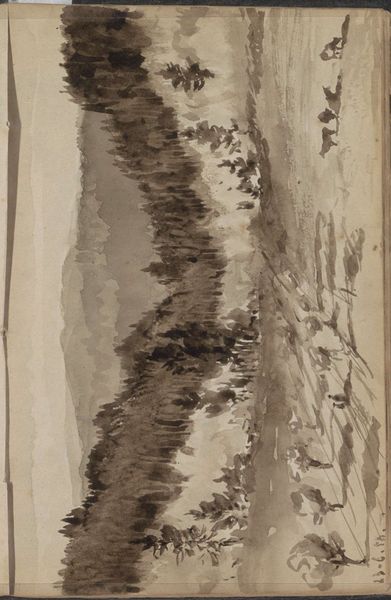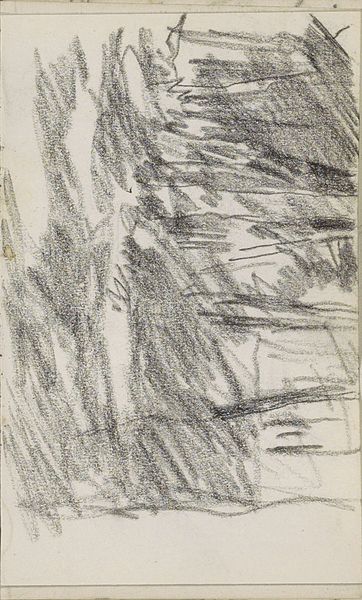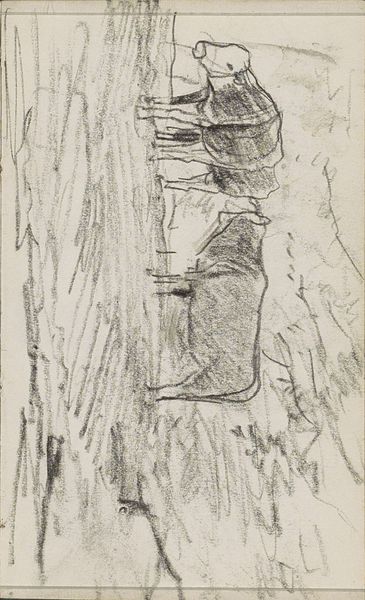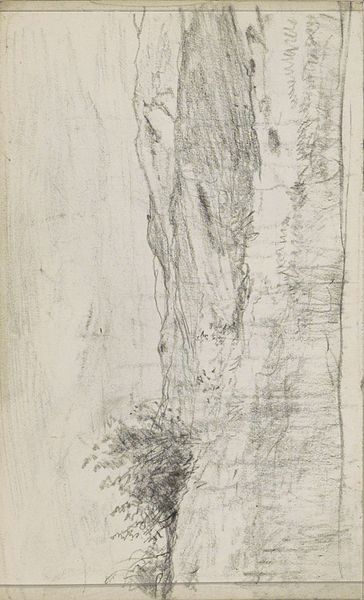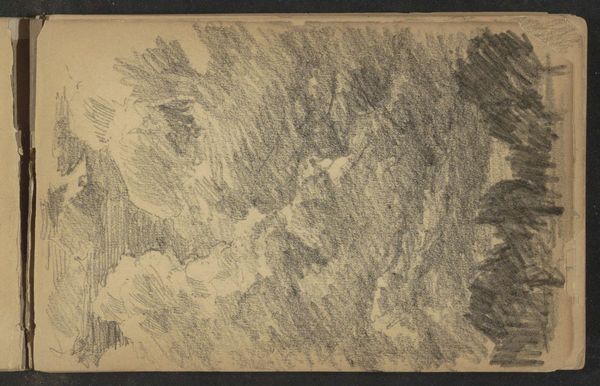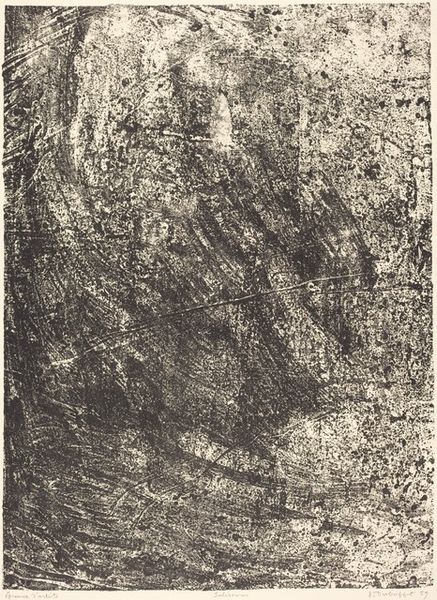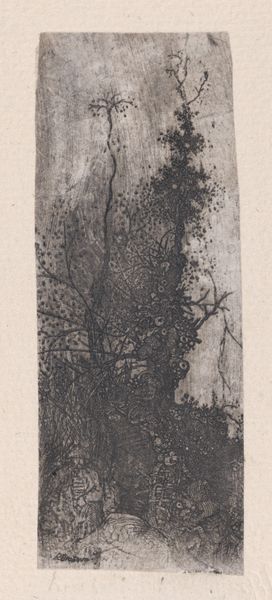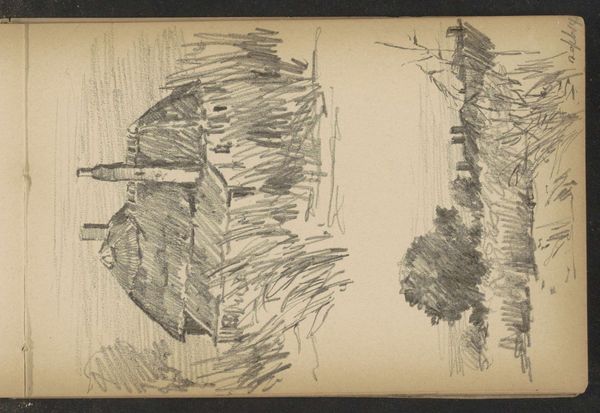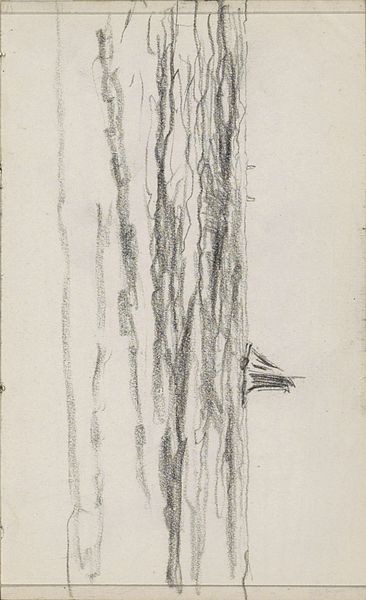
Heuvelachtig landschap, mogelijk te Gambar met de vulkaan De Kloet Possibly 1920 - 1924
0:00
0:00
willemwitsen
Rijksmuseum
drawing, paper, pencil, graphite
#
pencil drawn
#
drawing
#
landscape
#
paper
#
pencil
#
graphite
Copyright: Rijks Museum: Open Domain
Curator: This graphite drawing by Willem Witsen is titled "Hilly Landscape, possibly near Gambar with the volcano De Kloet," and dates probably from between 1920 and 1924. It's currently held in the Rijksmuseum. Editor: The first thing that strikes me is how unfinished it feels, and yet how evocative. The textured rendering of the landscape creates such a strong sense of depth and distance. Curator: Absolutely. Consider Witsen's social position; he moved among literary and artistic circles invested in depicting specific sites with meaning—here Java under Dutch colonialism. It forces a dialogue on landscape’s role in imperial power structures. Editor: True. And the starkness of the materials really lends itself to that reading. Graphite and paper, so readily available and inexpensive; mass-produced, almost. It’s fascinating to see how the artist uses simple materials to render this place with layers of complex textures. The labour involved becomes so visible. Curator: I see this as the production of landscape within unequal power relations—this rendering, even through humble materials, served to represent "exotic" locales to Western audiences, often reinforcing hierarchical social frameworks. Editor: I agree there is an aspect of that happening here. But on the other hand, that rawness—those unfinished parts and visible tool marks — somehow resist total co-option, maybe inadvertently undermining the authority such depictions typically conveyed. This could invite discourse regarding exploitation but through different lenses. Curator: That's a sharp insight, suggesting that materiality mediates and potentially subverts intended messages. Even an intentional form of representation and the implications can still be contested. Editor: Yes, by highlighting its status as a production rather than pure, untouched nature. The artist seems almost less like a visionary than a diligent worker representing Java in tones of light and dark through manual work. It encourages questioning narratives from a Marxist-based point of view. Curator: I appreciate the ways your understanding highlights materiality, offering a pathway into broader historical, political, and societal dialogues. Thank you! Editor: It was nice considering all the different production facets too, thank you.
Comments
No comments
Be the first to comment and join the conversation on the ultimate creative platform.
